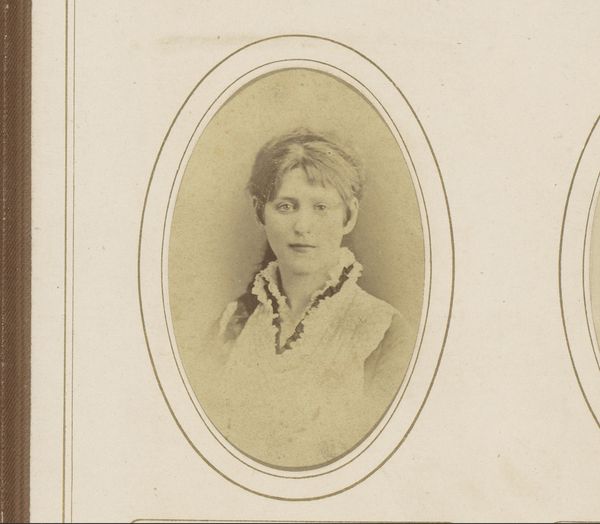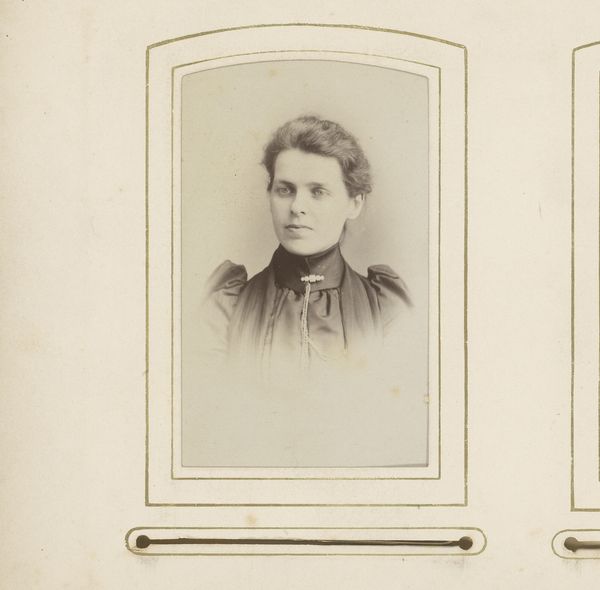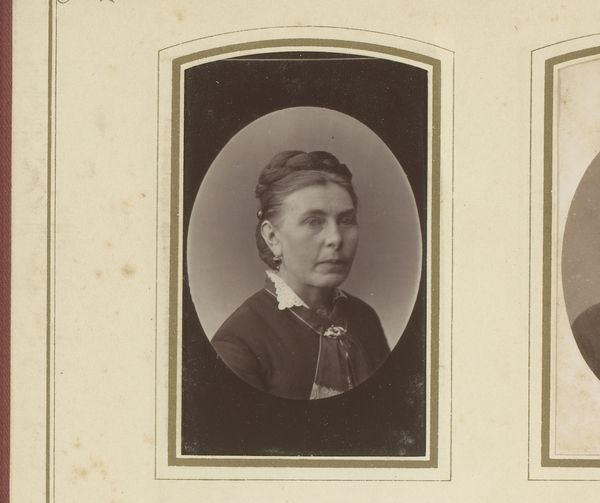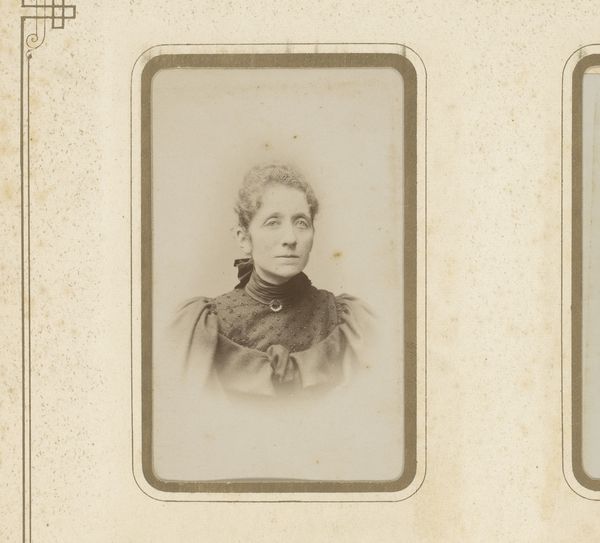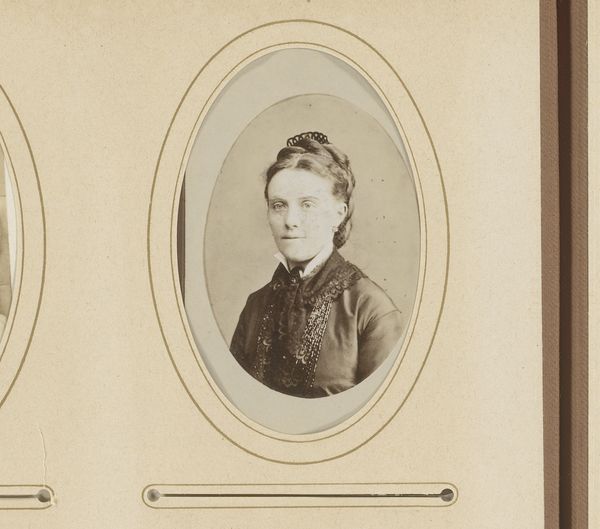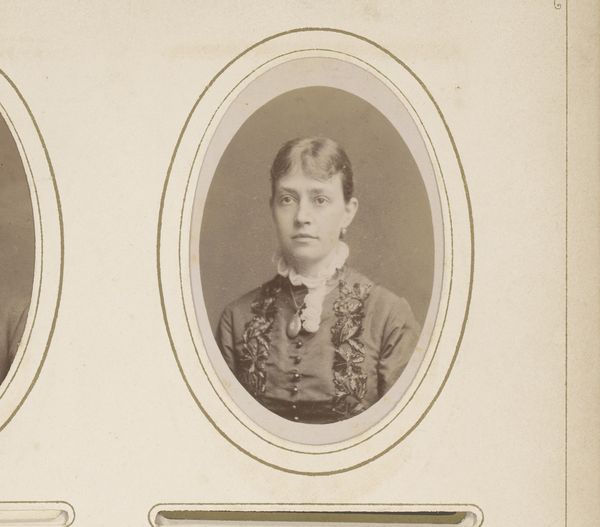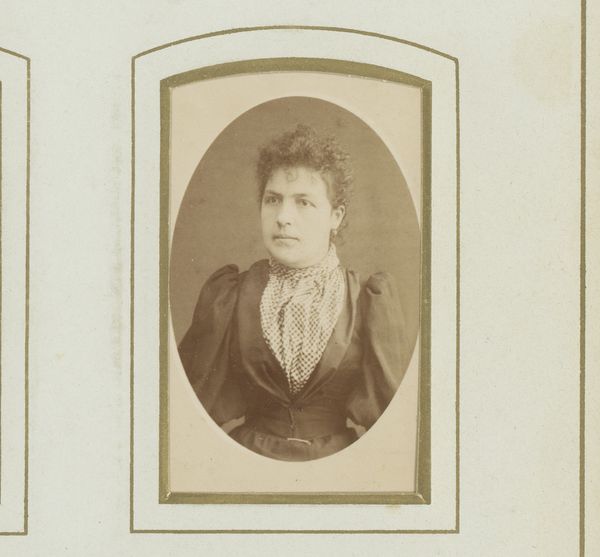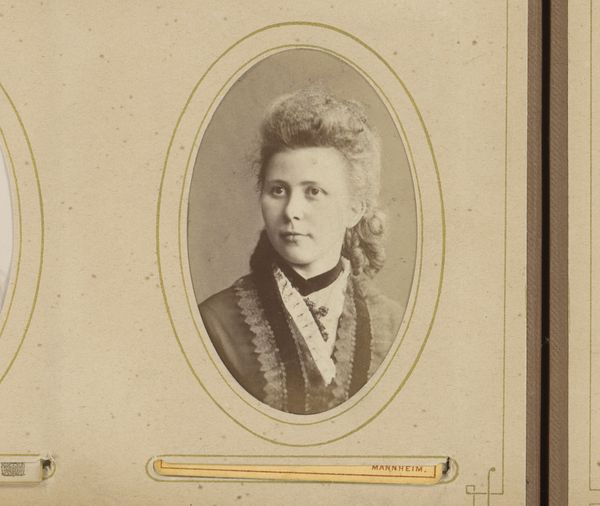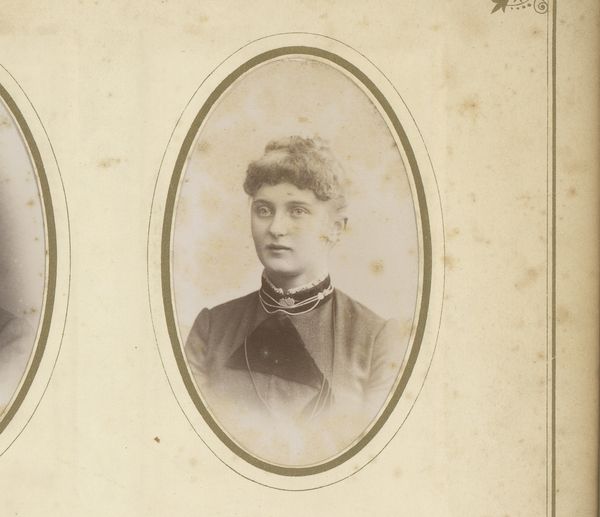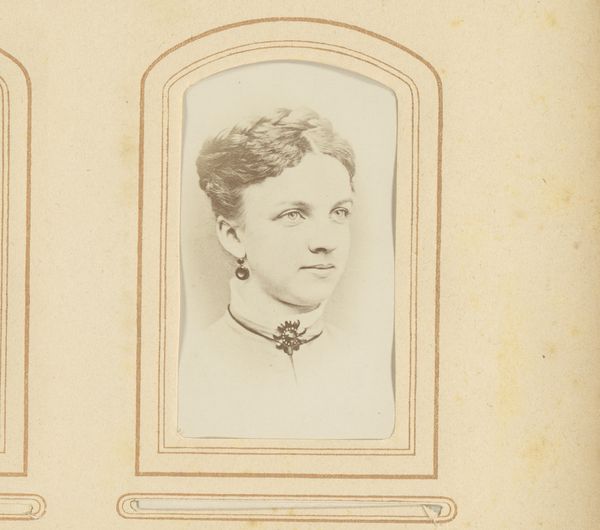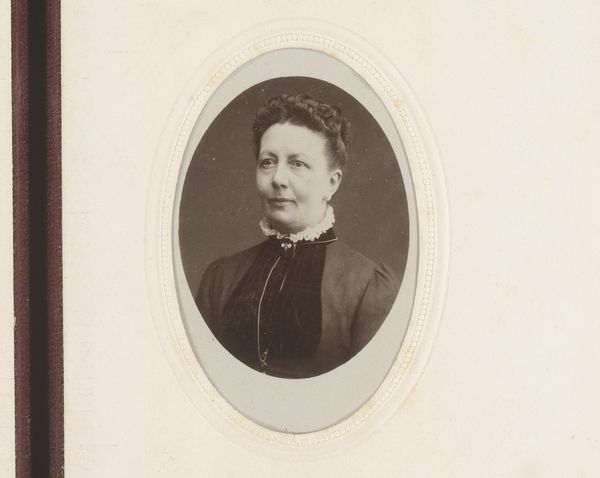
c-print, photography, gelatin-silver-print
#
portrait
#
c-print
#
photography
#
historical photography
#
gelatin-silver-print
#
19th century
Dimensions: height 84 mm, width 51 mm
Copyright: Rijks Museum: Open Domain
Editor: This is "Portret van een vrouw" or "Portrait of a Woman," by George Lodewijk Mulder, created sometime between 1870 and 1890, using a gelatin silver print process. I'm struck by its delicate, almost wistful quality, like a fleeting glimpse into someone's past. What stands out to you in this image? Curator: Well, looking at it from a historical perspective, portraits like this, especially in photography, played a key role in shaping social identity in the 19th century. It wasn't just about capturing a likeness; it was about constructing a particular image for public consumption. Notice the woman's dress and jewelry—what might they signify about her social standing? Editor: They definitely hint at a certain level of affluence, but I also get a sense of modesty, perhaps even restraint. Curator: Precisely. The very act of sitting for a portrait was a statement of status and belonging. Photographic studios arose as public spaces, and their commercial imperative and clientele, largely determined how these images were circulated, perceived, and the types of ideals they reinforced. This piece exemplifies the way social aspirations were visualized and disseminated, wouldn't you say? Editor: That’s a great point. It makes me consider how portraiture, even in photography, was carefully curated to project specific messages about the sitter's place in society. Curator: It really showcases how art, even seemingly simple portraits, acts as a mirror and a molder of societal values. Considering these pieces gives you an extraordinary glimpse into that historical dialogue, I think. Editor: I see the portrait with completely new eyes now! It’s so interesting to consider all these photographs and the sitter’s status back in the nineteenth century. Thanks!
Comments
No comments
Be the first to comment and join the conversation on the ultimate creative platform.
